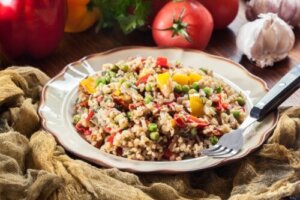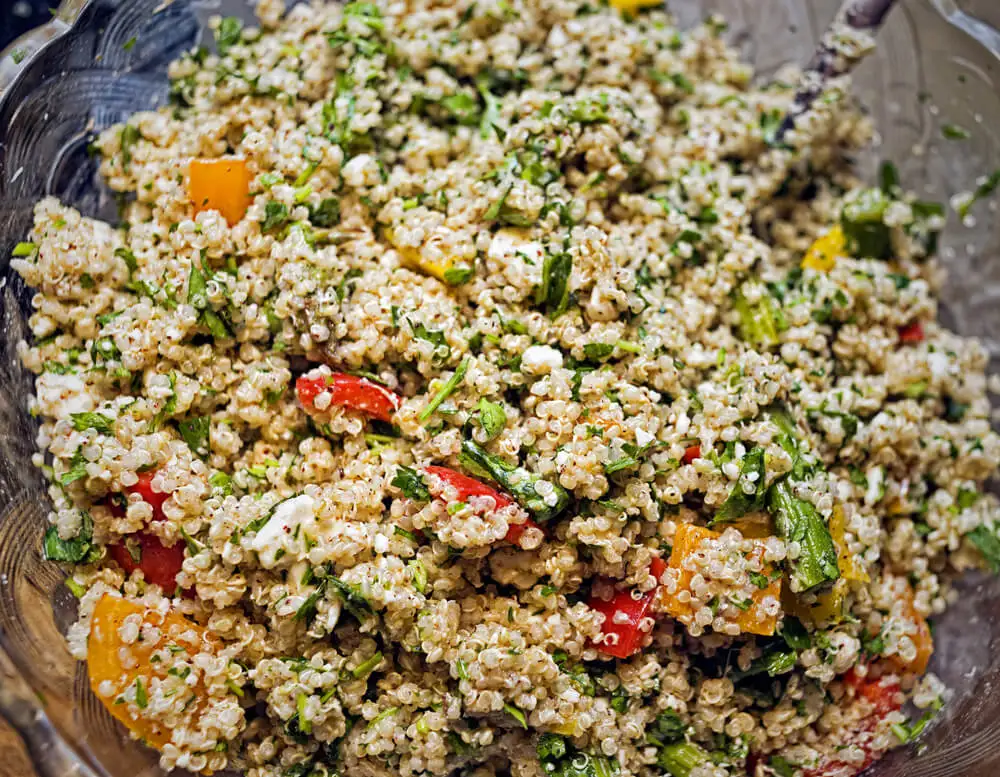Kashotto: What Is It and How to Include it in Your Diet?


Written and verified by the nutritionist Saúl Sánchez Arias
Kashotto is a dish that’s similar to risotto in appearance, but the ingredients used in this case are bulgur, millet, corn, wheat, buckwheat, quinoa, oats, and other cereals.
It is a creamy dish that can provide a high amount of essential nutrients of very high quality. For this reason, it’s beneficial to include it in your diet on a regular basis. Keep reading because we’ll tell you how you can prepare this delicious dish.
Kashotto recipe
Kashotto has many benefits, including its ability to provide the energy needed to help people perform at their best while playing sport. And not only that, it’s also ideal for subsequent recovery processes.
It also has essential vitamins and minerals. This is especially the case when vegetables are used when preparing it. Thanks to them, the antioxidant load increases, neutralizing the formation of free radicals and their subsequent accumulation in the body’s tissues. The result is a lower incidence of chronic pathologies, as stated in research published in the European Journal of Medicinal Chemistry.

Read more: Columbian Rice with Chicken: Healthy, Tasty and Economical
Is it a preparation suitable for coeliacs?
Kashotto can be made with wheat or cereals with gluten in them, but it’s possible to use bulgur, for example, as the main ingredient. Some claim that this makes the dish suitable for coeliacs, but this isn’t at all clear from many online sources.
It’s important to note that at least 25 grams of fiber should be provided each day, a requirement that is rarely met. In the case of inadequate consumption, certain health problems may gradually develop, such as dysbiosis.

“Kashotto”, a very healthy dish
As you have seen, kashotto is a very healthy preparation that can be included in the context of a varied diet. It’s especially positive for athletes, as it provides a high amount of good quality carbohydrates.
This ensures the athlete will have plenty of energy when carrying out exercise, avoiding drops in performance or fatigue. However, it must be ensured that all essential nutrients are consumed in sufficient doses for this purpose.
All cited sources were thoroughly reviewed by our team to ensure their quality, reliability, currency, and validity. The bibliography of this article was considered reliable and of academic or scientific accuracy.
- Alghannam, A. F., Gonzalez, J. T., & Betts, J. A. (2018). Restoration of Muscle Glycogen and Functional Capacity: Role of Post-Exercise Carbohydrate and Protein Co-Ingestion. Nutrients, 10(2), 253. https://doi.org/10.3390/nu10020253
- Tabbers, M. M., & Benninga, M. A. (2015). Constipation in children: fibre and probiotics. BMJ clinical evidence, 2015, 0303.
- Neha, K., Haider, M. R., Pathak, A., & Yar, M. S. (2019). Medicinal prospects of antioxidants: A review. European journal of medicinal chemistry, 178, 687–704. https://doi.org/10.1016/j.ejmech.2019.06.010
This text is provided for informational purposes only and does not replace consultation with a professional. If in doubt, consult your specialist.








